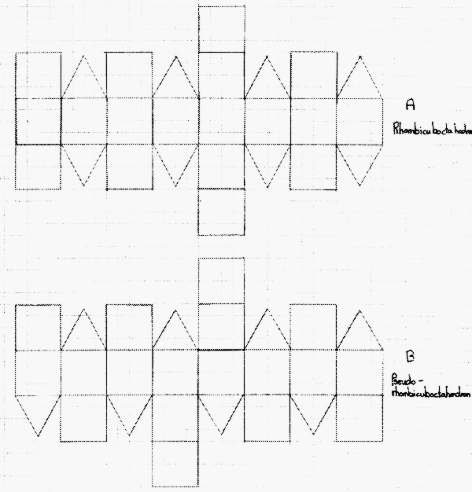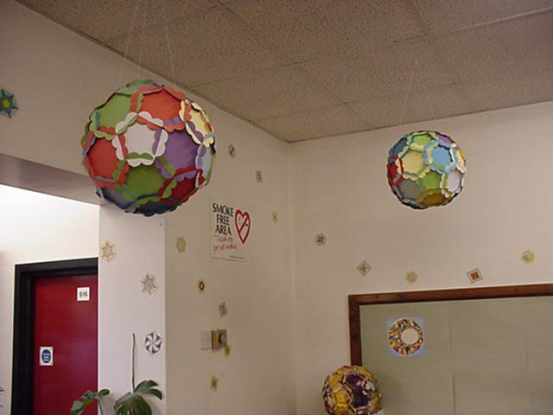Copyright © University of Cambridge. All rights reserved.
'Rhombicubocts' printed from https://nrich.maths.org/
Show menu
Sandy from The Mount School, York, sent these nets for the solids and Jacqui from the same school sent similar nets. Each solid is made up of 18 squares and 8 equilateral triangles with 3 squares and a triangle around each vertex.

Sandy found that each solid has 48 edges, 24 vertices and 26 faces. It remains a Tough Nut Challenge to describe the differences between these two solids in terms of their planes of symmetry and axes of rotational symmetry.
To help with this you need a model. At the Mount School they use a method that is quick and easy for making models as this classroom picture shows (though it is not of rhombicubocts). The tabs slot together and you need to make the tabs narrow so they don't cover up much of the faces of the solid.

Alternatively you could use Polydron to make the models, or a similar construction kit with plastic pieces that clip together. With equipment of this sort you can make models quickly and use your time to concentrate on the mathematics.